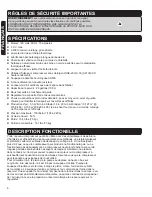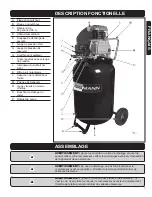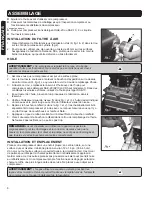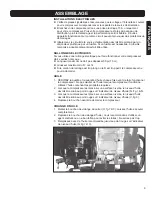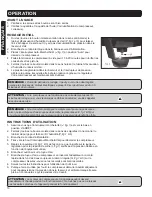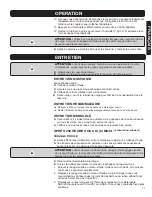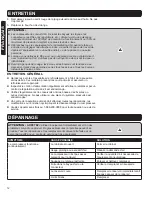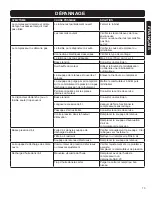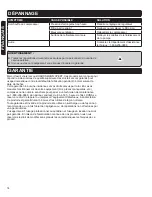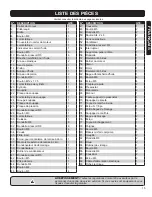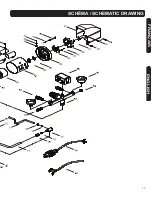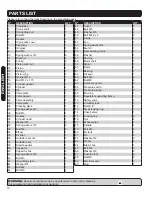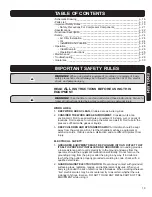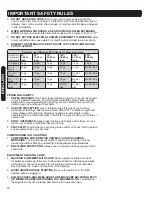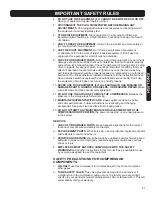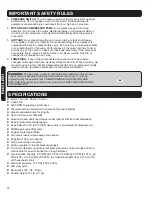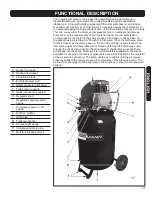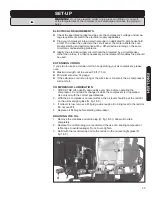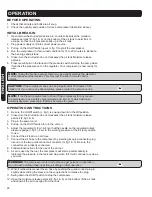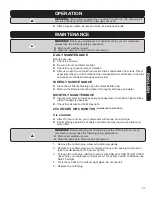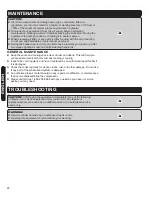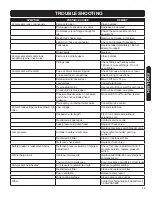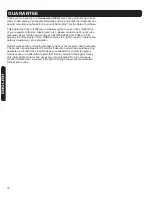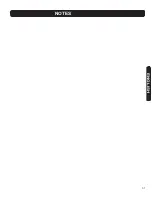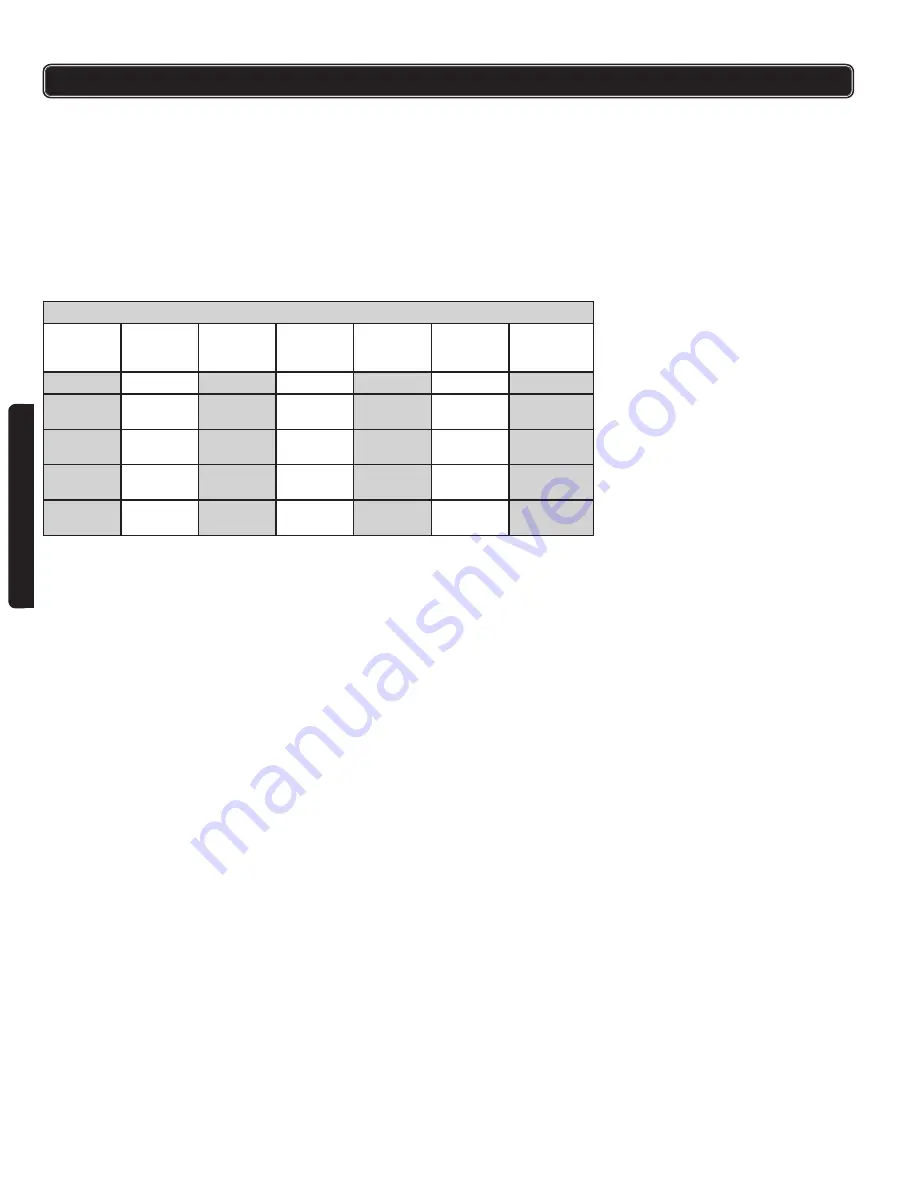
20
ENGLISH
IMPORTANT SAFETY RULES
3.
DO NOT ABUSE THE CORD.
Never carry your power equipment by the
cord or pull on the cord to unplug it. Protect the cord from potential sources of
damage: heat, oil & solvents, sharp edges, or moving parts. Replace damaged
cords immediately.
4.
WHEN WORkING OUTDOORS, USE AN OUTDOOR-RATED EXTENSION
CORD.
An extension cord rated for outdoor use must be marked “W-A” or “W”.
5.
DO NOT EXPOSE ELECTRICAL POWER EQUIPMENT TO MOISTURE.
Rain
or wet conditions can cause water to enter the unit and lead to electric shock.
6.
ENSURE THE EXTENSION CORD YOU USE IS OF SUFFICIENT GAUGE
FOR ITS LENGTH.
Recommended Minimum Wire Gauge for Extension Cords
Amps from
Equipment
Nameplate
25' /
7.62 m
long
50' /
15.24 m
long
75' /
22.86 m
long
100' /
30.48 m
long
150' /
45.72 m
long
200' /
60.96 m
long
0 - 5 amps 16 ga.
16 ga.
16 ga.
14 ga.
12 ga.
12 ga.
5.1 - 8
amps
16 ga.
16 ga.
14 ga.
12 ga.
10 ga.
Do Not Use
8.1 - 12
amps
14 ga.
14 ga.
12 ga.
10 ga.
Do Not
Use
Do Not Use
12.1 - 15
amps
12 ga.
12 ga.
10 ga.
10 ga.
Do Not
Use
Do Not Use
15.1 - 20
amps
10 ga.
10 ga.
10 ga.
Do Not
Use
Do Not
Use
Do Not Use
PERSONAL SAFETY
1.
DRESS PROPERLY.
Don’t wear loose clothing or jewelry; they can be caught
in moving parts. Protective, non-electrically conductive gloves and non-skid
footwear are recommended when working. Wear protective hair covering to
contain long hair and keep it from harm.
2.
USE EYE PROTECTION.
Use a full-face mask if the work you’re doing
produces metal filings, dust or wood chips. ANSI Z87.1 compliant, approved
safety glasses with rigid side-shields or goggles are acceptable in other
situations. Wear a clean dust mask if the work involves creating a lot of fine or
coarse dust.
3.
DON’T OVERREACH.
Keep proper footing and balance at all times. Do not
reach over or across machines that are running.
4.
STAY ALERT.
Watch what you are doing & use common sense. Don’t operate
any equipment when you are tired.
COMPRESSED AIR CAUTIONS
1.
COMPRESSED AIR FROM THIS UNIT MAY CONTAIN CARBON
MONOXIDE.
The air produced is neither suitable for breathing nor food
processing without filtering and testing to all applicable legal standards.
2.
BREATHING PROTECTION:
always use a respirator when spraying paint or
chemicals.
EQUIPMENT USE AND CARE
1.
MAINTAIN EQUIPMENT WITH CARE.
Keep equipment sharp and clean
for better and safer performance. Follow instructions for lubricating and safe
performance. Follow instructions for lubricating and changing accessories.
Keep handles dry, clean and free from oil and grease.
2.
AVOID UNINTENTIONAL STARTING.
Be sure the switch is in the OFF
position before plugging in.
3.
ALWAYS CHECk AND MAkE SURE TO REMOVE ANY ADjUSTING kEYS
OR WRENCHES BEFORE TURNING THE EQUIPMENT ON.
Left attached,
these parts can fly off a rotating part and result in personal injury.

